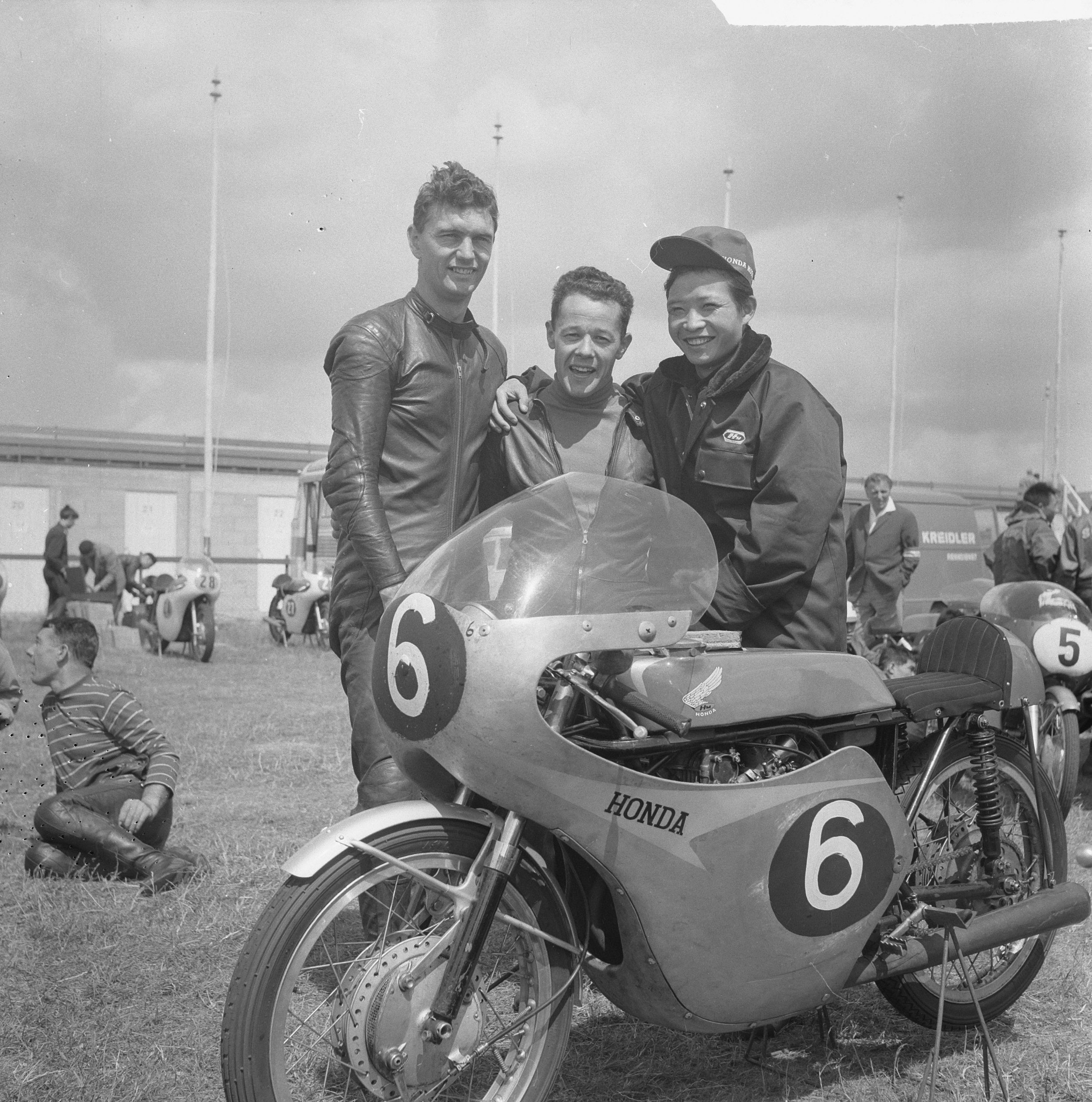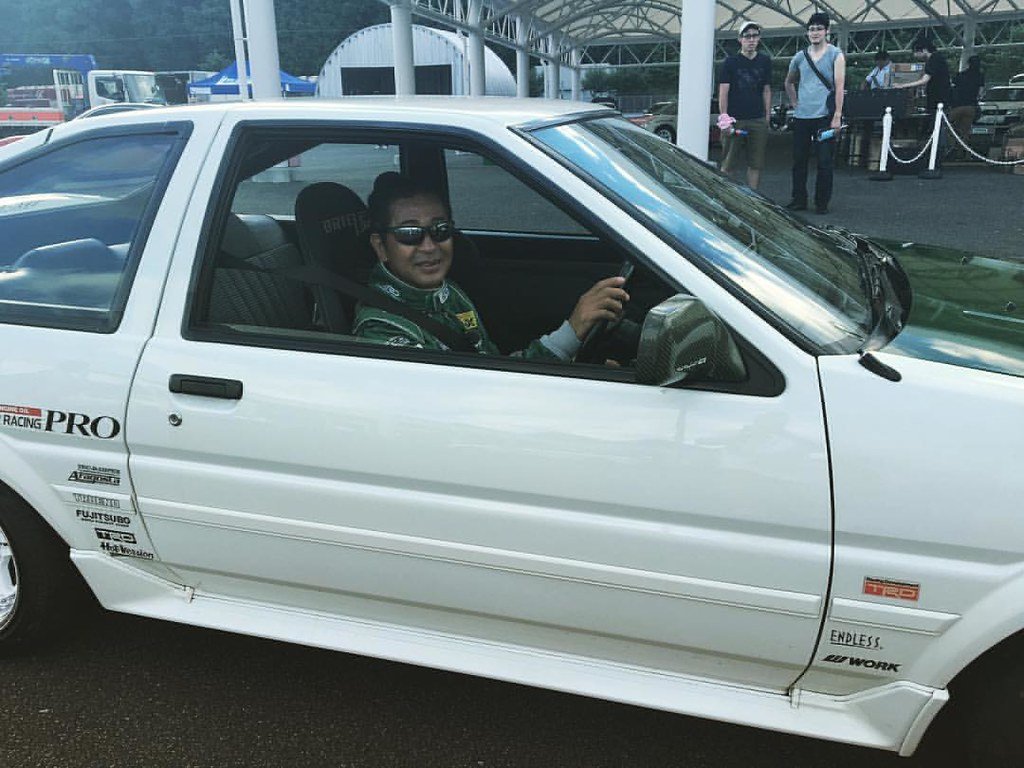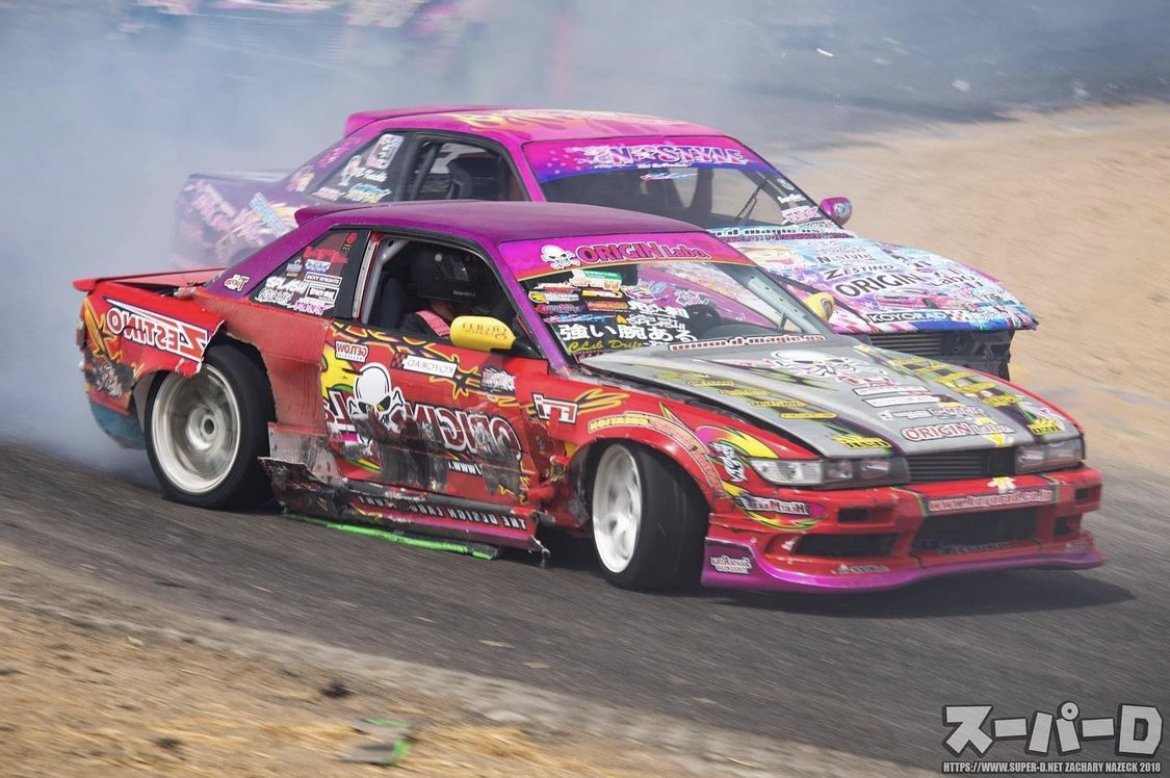THE JAPANESE LEGACY DRIFTS ON
Getting Down To The Roots Of Today’s Drifting Culture.
What Is Touge’ And How Does It Relate To Drifting?
Touge’ (峠, tōge) is the Japanese term for the word ‘pass’. Touge’ Racing is a particular form of Japanese auto racing that involves driving cars at a fast speed up, over, and then down the curved roads (or passes) that cut through Japan’s steep mountainous areas (think Mount Usui and Mount Gunma).
In the 1970’s, professional motorcycling and race driving legend Kunimitsu Takahashi started using a technique of hitting corners at the apex (the point closest to the inside of the curve) at a high enough speed to initiate a controlled slide through the corner, while still maintaining the highest exit speed possible.
Intrigued by Takahashi’s early drifting style, Keiichi Tsuchiya (also called the Dorikin or Drift King) set out to master the technique. It was a goal that earned him an iconic racing crowd reputation, and a feature video called Pluspy. This video had a huge influence on the car and racing culture worldwide and inspired many of today’s professional drifters.
The popularity of touge’ racing grew quickly in Japan, with street racers aspiring to drive the mountain roads just like the Drift King and others did. They popularized it as an underground sport in the late 1980’s, with races often getting clandestinely initiated by drivers simply flashing their car’s high beams to cue opponents. It would trigger a race, and soon, a trail of touge’ racers would be seen coming off the mountains.
Throughout a touge’ race, drivers must fight for position while negotiating difficult s-curves at treacherous speeds. It didn’t take long for drivers to learn the technique of drifting could give them an advantage if they could hold a position in the corner that blocked the passing area. Nevertheless, drifters of these rear-wheel-drive cars would soon be challenged by a growing number of faster front-wheel-drive vehicles that had a greater advantage for passing on the straight-aways.
Although touge’ was definitely an early influencer of today’s competitive drifting world, most Japanese racing techniques are no longer utilized in contemporary drift settings.
That said, a few circuits still cherish them, and they strive to incorporate more of the old-school Japanese driving ways into their programs than we typically see in the top pro drifting event circuits.
More ‘Master Influencing’.
Tsuchiya would go on to influence J-Pop culture as a technical director on the Initial D manga television series, which ran steadily for nearly 20 years. The series focused almost exclusively on the drifting aspect of touge’ racing and is credited to be the most accurate and engaging touge’ fiction ever made.
As interest in Initial D soared everywhere in the world, it sparked a great fascination with the sport of drifting cars in the United States and other countries. This led to the formation of several grassroots drifting teams, as well as the present-day professional drifting circuits.
Many other areas of the drifting world would also be touched by Tsuchiya’s master expertise over the years. He provided technical guidance on the set of The Fast And The Furious: Tokyo Drift, has judged the D1 Grand Prix (D1GP) international drift series, and has been the host of the Best Motoring International television series.
All of these productions have - in some form - contributed to what the drifting industry has become today. If it weren’t for visionaries such as Tsuchiya, Takahash, and others, the sport of drifting may never have hit the mainstream. Through their guidance and education, it has become the fastest growing motorsport in the world.
Style Legends.
Of course, one of the most influential Japanese aspects of the drifting scene has been its vehicles. And although there was once a time when Japanese touge’ style cars (or street style cars) were prevalent in the competitive drifting culture, the tests of time, customization, and the automobile revolution have influenced it otherwise.
“It's been a long time since 2001 and professional drifting has grown well beyond Japan's borders,” noted Benson Hsu, a former licensed Formula DRIFT and D1GP competitor. “With organizations forming pro drifting series around the world like what Formula D did in the United States, drifting became a global phenomenon, and drift car style was no longer something determined by regional areas of Japan.”
Hsu, a self-proclaimed American drifting pioneer and the host and producer of The Sileightymania Podcast, added, “It's hard to recognize the original roots of Japanese street car style in professional drifting, but in the past 10 years, grassroots drifting has had a resurgence in the United States.”
Hsu credits organizations like Final Bout for making the origins of the Japanese drift car style popular again, indicating the Midwest group preaches both Japanese driving style and car style.
“They’ve gained quite a following and you can see several similar offshoots popping up around the country,” he said. “We’re seeing lots of examples of Japanese style drift cars again, as it has become very popular around the world, and especially on social media.”
Photo courtesy of Zachary Nazeck.
Keeping The Roots Alive.
Hsu also shared that, “grassroots drifting was the only drifting that existed,” in the United States prior to the creation of the professional circuit in 2004. “We all learned about drifting from Japanese videos and magazines available at small Japanese ‘mom and pop’ stores in our respective areas,” he said, indicating the earliest areas to learn of drifting and start practicing it were Hawaii and Southern California.
“People like Alex Pfeiffer (Hawaii) and Bryan Norris (Los Angeles) were emulating it on mountain roads as early as 1992 and then Dave Scholz and Mark Hutchinson (Thousand Oaks, Calif.) from team Slide Squad in 1997,” Hsu added. “I started with people like Andy Yen in 2000 in the San Gabriel Valley, Calif. Without anyone to teach us, we all tried on our own in mountain roads (touge’) and not race tracks, because drifting was frowned upon by all track owners, sanctioning bodies, and event hosts.”
According to the podcast host, the influx of professional drifting also had an impact on the amateur drifting scene. “The local grassroots events and drivers were no longer as interesting,” he recalled. “During those years, professional drifting seemed to be the goal of drifting, and grassroots drifting was more of a stepping stone or a proving ground, before becoming professional.”
However, Hsu feels those tides have been turning, with grassroots drifting becoming popular again during the past 10 years. Again, he credits the Final Bout organization for their influences, as well as a prominent grassroots drift team led by Julian Jacobs called Animal Style.
“The [Animal Style] team really embodies the spirit of their grassroots and pro hero Naoki Nakamura,” Hsu said. “Animal Style is one of the first teams to drift at a very high level, maybe pro level, but for grassroots events only.”
According to Hsu, Animal Style’s early drift videos on YouTube went viral attracting a new audience to what they believe is the best drifting style. They also host the competitive drifting series Super D, which promotes their aggressive and highly-technical drifting style.
Final Bout’s emphasis is on team drifting, drifting for the love of the sport and the community, and making sure your car looks good. They hold events all over the United States to promote drifting for fun.
The growing popularity of both groups have attracted famous grassroots drivers from Japan to their United States events, which Hsu feels is a sign that U.S. grassroots drifting, and Japanese style cars and driving, are making a formidable comeback.
“Bringing over revered Japanese veteran drivers and their cars is a major achievement for grassroots drifting, because in the past, it was usually pro drivers being brought over to compete in pro events,” Hsu commented. “It goes to show that the interest in grassroots drifting is great enough that it can justify the cost of bringing over Japanese drivers, their cars, extra parts and all of the logistics to support it all.”
Photo courtesy of Drift Session.
A Final Nod.
Hsu also called out the Drift Session organization in Hawaii, indicating they were responsible for bringing many famous D1GP drivers to their grassroots events in the mid 2000s, with names including Komatsu, Ueo, Tanaka, Kazama, Kazuya Bai, Maeda Ken, and Hibino.
“I don't think Hawaii's efforts influenced much of the mainland's drifting culture, but they are part of the United States and I don't want people to overlook the very special and unique grassroots drifting culture they had there.”
It was a culture that notably embraced and celebrated the Japanese roots of drifting, ensuring fans from the early days of competitive drifting were able to pay respects to where it all started. It’s a trend that hopefully - if Final Bout, Animal Style, Benson Hsu, and others have any say - will one day soon be more and more prominent on the mainland.
We will continue to follow the history, current state, and future of drifting here at Drift Enthusiast Magazine. To stay ‘in-the-know’, please subscribe to our alerts and be sure to comment on the content you love and want more of.





